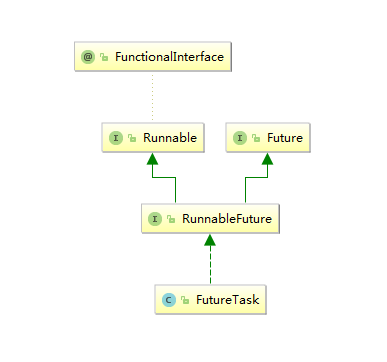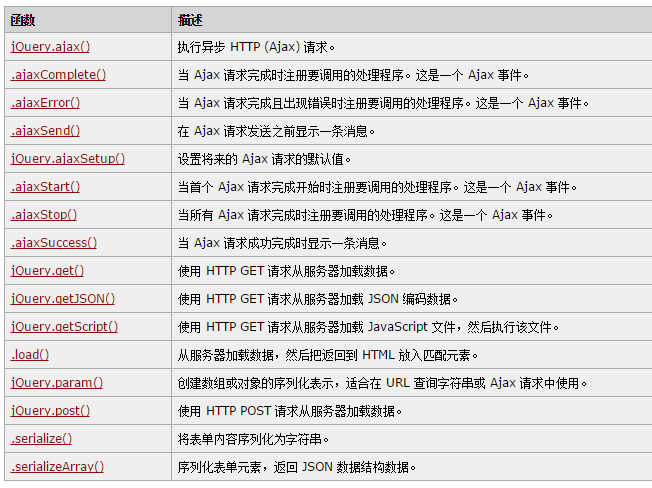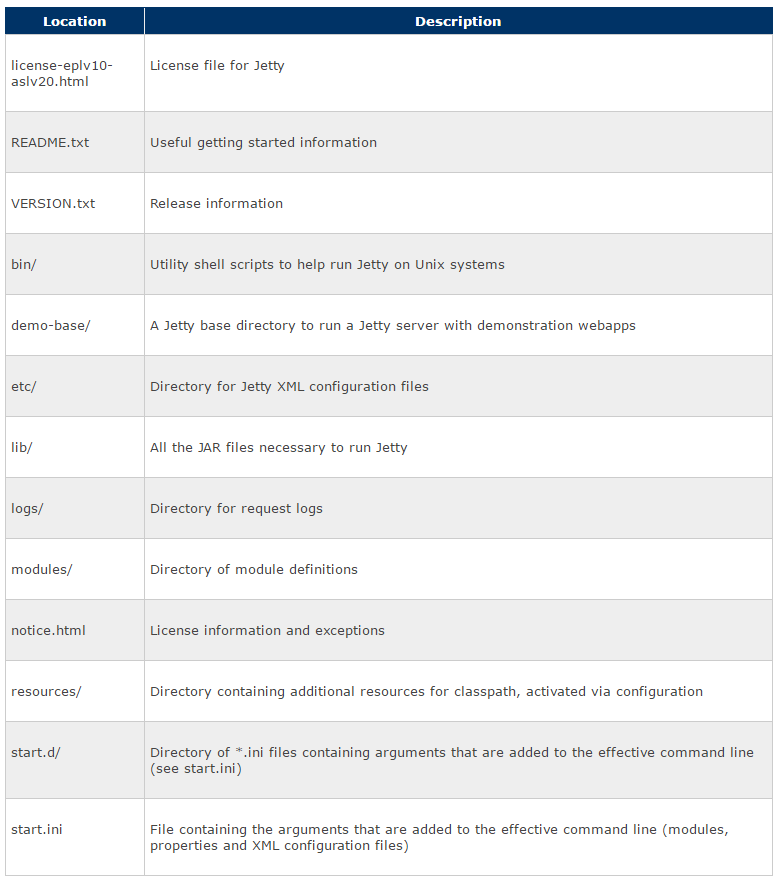并发编程系列之FutureTask源码学习笔记
并发编程系列之FutureTask源码学习笔记
1、什么是FutureTask类?
在上一章节的学习中,我们知道了Future类的基本用法,知道了Future其实就是为了监控线程任务执行的,接着本博客继续学习FutureTask。然后什么是FutureTask类?
Future是1.5版本引入的异步编程的顶层抽象接口,FutureTask则是Future的基础实现类。同时FutureTask还实现了Runnable接口,所以FutureTask也可以作为一个独立的Runnable任务。
2、使用FutureTask封装Callable任务
线程中是不能直接传入Callable任务的,所以需要借助FutureTask,FutureTask可以用来封装Callable任务,下面给出一个例子:
package com.example.concurrent.future;import java.util.Random;import java.util.concurrent.*;/** * <pre> * FutureTask例子 * </pre> * <p> * <pre> * @author nicky.ma * 修改记录 * 修改后版本: 修改人: 修改日期: 2021/08/28 18:04 修改内容: * </pre> */public class FutureTaskExample {public static void main(String[] args) throws ExecutionException, InterruptedException {FutureTask futureTask = new FutureTask(new CallableTask());Thread t = new Thread(futureTask);t.start();System.out.println(futureTask.get());}static class CallableTask implements Callable<Integer> {@Overridepublic Integer call() throws Exception{Thread.sleep(1000L);return new Random().nextInt();}}}
3、FutureTask UML类图
翻下FutureTask的源码,可以看出实现了RunnableFuture接口
public class FutureTask<V> implements RunnableFuture<V> {// ...}
RunnableFuture接口是怎么样的?可以看出其实是继承了Runnable,Future
public interface RunnableFuture<V> extends Runnable, Future<V> {/** * Sets this Future to the result of its computation * unless it has been cancelled. */void run();}
在idea里画出FutureTask的uml类图:
所以,可以说FutureTask本质就是一个Runnable任务
4、FutureTask源码学习
FutureTask类属性
public class FutureTask
implements RunnableFuture { // 状态:存在以下7中状态private volatile int state;// 新建private static final int NEW = 0;// 任务完成中private static final int COMPLETING = 1;// 任务正常完成private static final int NORMAL = 2;// 任务异常private static final int EXCEPTIONAL = 3;// 任务取消private static final int CANCELLED = 4;// 任务中断中private static final int INTERRUPTING = 5;// 任务已中断private static final int INTERRUPTED = 6;// 支持结果返回的Callable任务private Callable<V> callable;// 任务执行结果:包含正常和异常的结果,通过get方法获取private Object outcome;// 任务执行线程private volatile Thread runner;// 栈结构的等待队列,该节点是栈中的最顶层节点private volatile WaitNode waiters;
}
构造方法
// 传入callable任务
public FutureTask(Callablecallable) { if (callable == null)throw new NullPointerException();this.callable = callable;this.state = NEW; // ensure visibility of callable
}
// 传入runnable任务、结果变量result
public FutureTask(Runnable runnable, V result) {this.callable = Executors.callable(runnable, result);this.state = NEW; // ensure visibility of callable
}
是一个Runnable任务,run方法实现
public void run() {
// 两种情况直接返回// 1:状态不是NEW,说明已经执行过,获取已经取消任务,直接返回// 2:状态是NEW,将当前执行线程保存在runner字段(runnerOffset)中,如果赋值失败,直接返回if (state != NEW ||!UNSAFE.compareAndSwapObject(this, runnerOffset,null, Thread.currentThread()))return;try {Callable<V> c = callable;if (c != null && state == NEW) {V result;boolean ran;try {// 执行了给如的Callable任务result = c.call();ran = true;} catch (Throwable ex) {result = null;ran = false;// 异常的情况,设置异常setException(ex);}if (ran)// 任务正常执行,设置结果set(result);}} finally {// runner must be non-null until state is settled to// prevent concurrent calls to run()runner = null;// state must be re-read after nulling runner to prevent// leaked interruptsint s = state;// 任务被中断,执行中断处理if (s >= INTERRUPTING)handlePossibleCancellationInterrupt(s);}
}
setException方法:
protected void setException(Throwable t) {// CAS,将状态由NEW改为COMPLETING(中间状态)if (UNSAFE.compareAndSwapInt(this, stateOffset, NEW, COMPLETING)) {// 返回结果outcome = t;// 将状态改为EXCEPTIONALUNSAFE.putOrderedInt(this, stateOffset, EXCEPTIONAL); // final statefinishCompletion();}}
get获取执行结果
public V get() throws InterruptedException, ExecutionException {
int s = state;// 任务还没完成,调用awaitDonwif (s <= COMPLETING)s = awaitDone(false, 0L);// 返回结果return report(s);}
get超时的方法
public V get(long timeout, TimeUnit unit)throws InterruptedException, ExecutionException, TimeoutException {// unit是时间单位,必须传if (unit == null)throw new NullPointerException();int s = state;// 超过阻塞时间timeout,抛出TimeoutExceptionif (s <= COMPLETING &&(s = awaitDone(true, unit.toNanos(timeout))) <= COMPLETING)throw new TimeoutException();return report(s);}
重点看下awaitDone方法:
private int awaitDone(boolean timed, long nanos)throws InterruptedException {// 计算截止时间final long deadline = timed ? System.nanoTime() + nanos : 0L;WaitNode q = null;//boolean queued = false;// 无限循环,判断条件是否符合for (;;) {// 1、线程是否被中断,是的情况,移除节点,同时抛出InterruptedExceptionif (Thread.interrupted()) {removeWaiter(q);throw new InterruptedException();}// 2、获取当前状态,如果状态大于COMPLETING// 说明任务完成了,有可能正常执行完成,也有可能是取消了任务int s = state;if (s > COMPLETING) {if (q != null)// thread置为null 等待JVM gcq.thread = null;//返回结果return s;}//3、如果状态处于中间状态COMPLETING//表示任务已经结束但是任务执行线程还没来得及给outcome赋值else if (s == COMPLETING) // cannot time out yet// 这种情况线程yield让出执行权,给其它线程先执行Thread.yield();// 4、如果等待节点为空,则构造一个等待节点else if (q == null)q = new WaitNode();// 5、如果还没有入队列,则把当前节点加入waiters首节点并替换原来waiterselse if (!queued)queued = UNSAFE.compareAndSwapObject(this, waitersOffset,q.next = waiters, q);else if (timed) {nanos = deadline - System.nanoTime();//如果需要等待特定时间,则先计算要等待的时间// 如果已经超时,则删除对应节点并返回对应的状态if (nanos <= 0L) {removeWaiter(q);return state;}// 阻塞等待特定时间LockSupport.parkNanos(this, nanos);}else// 让线程等待,阻塞当前线程LockSupport.park(this);}}
cancel取消任务
public boolean cancel(boolean mayInterruptIfRunning) {
// 如果任务已经结束,则直接返回false
if (!(state == NEW &&
UNSAFE.compareAndSwapInt(this, stateOffset, NEW,mayInterruptIfRunning ? INTERRUPTING : CANCELLED)))return false;
try { // in case call to interrupt throws exception
// 需要中断任务的情况if (mayInterruptIfRunning) {try {Thread t = runner;// 调用线程的interrupt来停止线程if (t != null)t.interrupt();} finally { // final state// 修改状态为INTERRUPTEDUNSAFE.putOrderedInt(this, stateOffset, INTERRUPTED);}}
} finally {
finishCompletion();
}
return true;
}
finishCompletion方法:
private void finishCompletion() {// assert state > COMPLETING;for (WaitNode q; (q = waiters) != null;) {if (UNSAFE.compareAndSwapObject(this, waitersOffset, q, null)) {// 无限循环,遍历waiters列表,唤醒节点中的线程,然后将Callable置为nullfor (;;) {Thread t = q.thread;if (t != null) {q.thread = null;// 唤醒线程LockSupport.unpark(t);}WaitNode next = q.next;if (next == null)break;// 置为null,让JVM gcq.next = null; // unlink to help gcq = next;}break;}}done();callable = null; // to reduce footprint}
- https://juejin.cn/post/6844904181824749582#heading-11
- https://www.cnblogs.com/wade-luffy/p/7073827.html


































还没有评论,来说两句吧...